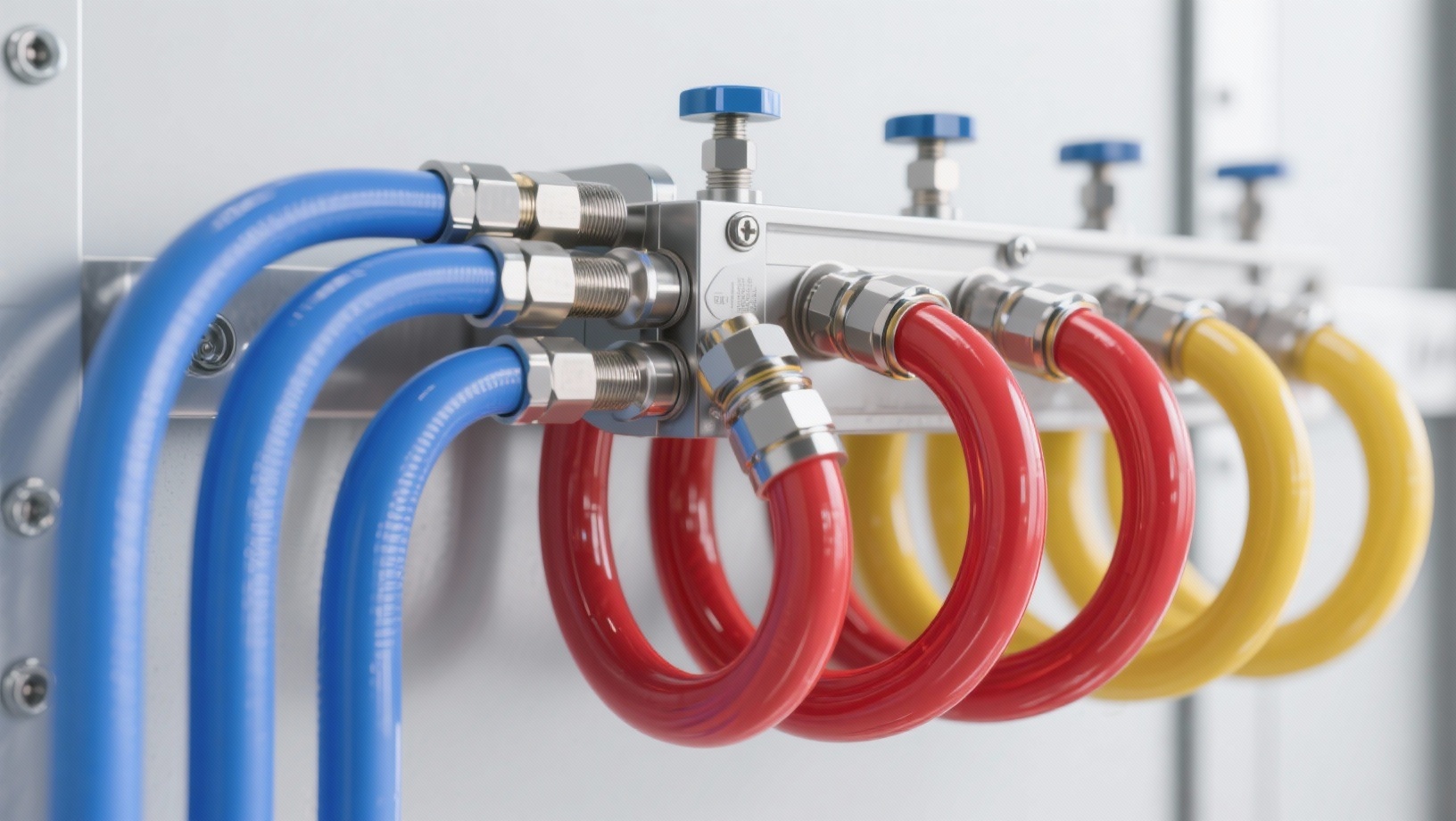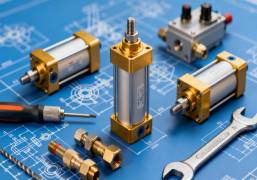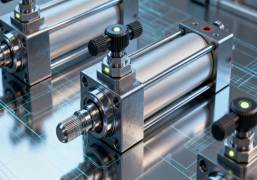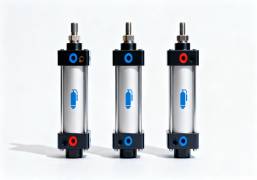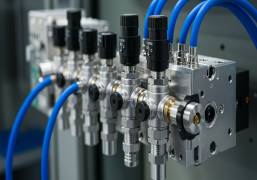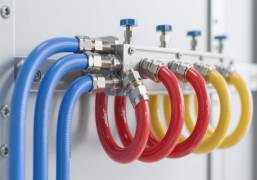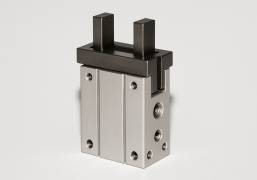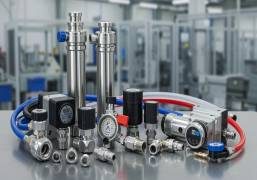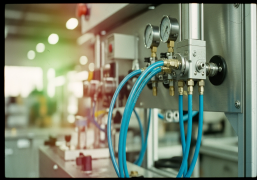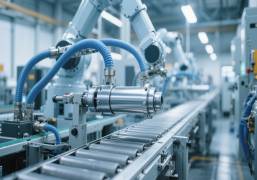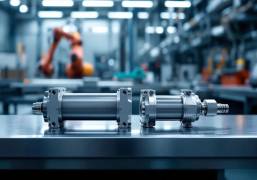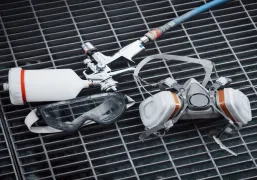Compressed air plays a vital role in contemporary pneumatic operations. Compressed air actuates cylinders, valves, and tools on automation lines, packaging machines, and assembly lines, and throughout other industrial environments. However, one hidden efficiency killer exists in nearly every pneumatic operation: air leaks.
Even the smallest leak in PU tubes and coils can use significant energy, introduce pressure drops, and cause increased costs. Studies have indicated potential leakage rates of up to 25-30% of compressed air if proper accounting and maintenance for leaks in a pneumatic system are not instituted.
This blog explores how to minimise air leakage in PU tubes and coils, including best installation practices, maintenance tips, and selection guidelines—all aimed at improving your system’s efficiency and reliability.
Understanding PU Tubes and Coils
Common in pneumatic systems, polyurethane (PU) tubes and coils enable the passage of compressed air from one component to another. PU tubes/coils are light and flexible and have abrasion resistance, making them suitable for confined spaces or moving pieces such as robotic arms or automated assemblies.
Common advantages of PU tubes:
- High flexibility and bend radius
- Resistance to abrasion and kinking
- Good chemical and oil resistance
- Lightweight and easy to install
However, their flexibility can also make them prone to leaks if not installed or maintained correctly. If you are looking for PU tube and coil manufacturers in Noida, V.S. Pneumatics is there for support.
Why Do Air Leaks Matter?
Air leaks can cause big problems over time.
- Energy Loss: Compressors become dependent on increased workloads to maintain pressure.
- Pressure Drop: Pressure changes impact cylinder and actuator performance.
- Shortened Life: Pressure changes lead to variable component wear, scheduled for repairs.
- Increased Overall Cost: Components utilise more power and are subject to more frequent repairs.
- Excessive Noise and Dangerous: The presence of leaking air is commonly known to produce constant hissing, expending energy.
In short, preventing leaks is not just about saving air; it’s about saving money and protecting equipment life.
If you are looking for the best quality PU tubes and coils, contact V.S. Enterprises today. We are one of the best PU tubes and coils dealers in India.
Common Causes of Air Leakage in PU Tubes
Before you fix leaks, you need to know some of the factors that lead to air leakage:
- Poor Tube Cutting: Any uneven or angled cuts can hinder proper sealing within fittings.
- Loose Fittings or Improper Insertion: If there is incomplete insertion, micro-leaks can develop.
- Damaged Tube Ends: With time, tubes can become scratched or deformed, impacting the seal's quality.
- Excessive Bending or Kinking: Frequent bending can weaken the tube wall and is a route to cracking.
- Exposure to Heat, Oil, or UV: These things can break down polyurethane and leave it brittle.
- Your tube is the wrong size or type: The outer diameter or material of a tube can affect the pressure rating.
Best Practices to Minimize Air Leakage
Follow these proven techniques to ensure your pneumatic system stays airtight and efficient.
1. Select Quality Tubes and Fittings.
Always use high-quality Polyurethane tubes and quality fittings of well-trusted brands like Janatics, Festo, Pneumax, or SMC, to name a few, which can be found in V.S. Enterprises.
Low-quality and inexpensive tubing saves money at the beginning, but they do not last for a long time.
Tip: The fitting type should always be matched to the outer diameter (OD) of the tube. The leakage of air can be caused by even a 0.1 mm mismatch.
2. Cut Tubes Strauss, and Clean.
The end-cut of the tube is what defines the quality of the seal within the fitting. A sharp tube cutter (not scissors or blades) is important to provide a clean square cut.
Avoid:
Angled or jagged cuts
The end of the tubes is flattened or smashed.
Best Practice:
It is always best to cut off about 10-15 mm of the old end of an existing tube and reconnect it to a new fitting.
3. Insert Tubes Properly into Fittings
One of the most overlooked causes of leakage is incomplete insertion into push-in fittings. You must ensure the tube reaches the bottom of the fitting socket to compress the inner sealing O-ring completely.
Check:
- The tube should not come out easily from the fitting.
- Listen for a click or feel resistance when the tube locks in.
4. Avoid Over-Bending and Twisting
Each PU tube has a minimum bend radius — bending it tighter than this can cause internal cracks or stress marks, leading to leaks.
Guidelines:
- Follow manufacturer’s bend radius recommendations (e.g., 25–50 mm depending on size).
- Use tube clips or holders to route tubes neatly and avoid tangles or sharp turns.
- In high-movement areas, consider PU coils or braided PU tubes for flexibility.
5. Protect Tubes from Heat and Chemical Damage
PU tubes degrade faster when exposed to:
- Continuous sunlight (UV rays)
- High ambient temperatures
- Oil or solvents from nearby machinery
Preventive Steps:
- For extreme conditions, use heat-resistant or anti-static PU tubing to keep the tube from touching compressor discharge lines or hot items.
- In oily environments, refer to nylon or PTFE tubes instead of polyurethane tubings.
- Routinely Check for leaks:
Engaging in a minor effort of preventative care can save you a lot of money. Include preventative maintenance inspections for leaks as a regular part of your maintenance programme.
Methods of Leak Detection:
- Soapy Water Test: Apply soapy water at fittings and joints; check for any bubbling.
- Ultrasonic Leak Detector: A device that picks up the high-frequency sound of air escaping.
- Air Flow: Air monitoring flow meters provide downloads and share with you if your system is functioning properly.
Maintenance Suggestion:
Schedule leak inspections every 3-6 months or after you make a major upgrade or change to the system.
7. Replace Damaged Tubes Regularly
Immediately replace the tube if you see discolouration or cracks
When replacing:
- Cut fresh ends cleanly.
- Avoid reusing fittings if threads or seals look worn.
- Use colour-coded tubes for easy identification and maintenance in complex setups.
8. Optimize Tube Routing Design
Proper routing ensures long-term reliability. Poor routing leads to unnecessary stress and abrasion.
Design Best Practices:
- Keep tube runs as short as possible.
- Avoid rubbing against sharp edges or moving components.
- Bundle and organise tubes with spiral wraps or cable ties.
- Leave a little slack for movement and vibration.
Bonus Tip: Inspect the Full System
Air leaks are not only in tubing – the leaks can exist in valves, connectors, or actuators. If, after replacing tubing, air leaks continue:
- Check for wear in any part of the system.
- Look for loosening threadsealing tape or O-rings.
- Verify pressure levels are within rated limits for all components.
Conclusion
It may seem that air leakage in PU tubes and coils is a minor problem, but it drains the energy, reduces productivity, and deteriorates equipment by a big margin. This problem can be significantly reduced by using correct installation practices. We have a full selection of PU tubes, coils, fittings, and pneumatic accessories from top brands (Janatics, Festo, SMC, and Pneumax) that offer reliable performance and seals that last.
If you are looking to upgrade or troubleshoot your pneumatic setup, ask us at V.S. Pneumatics- PU tubes and coils manufacturers in Noida, and our team of experts will assist you with quality components that will help you save air and energy and increase efficiency.

